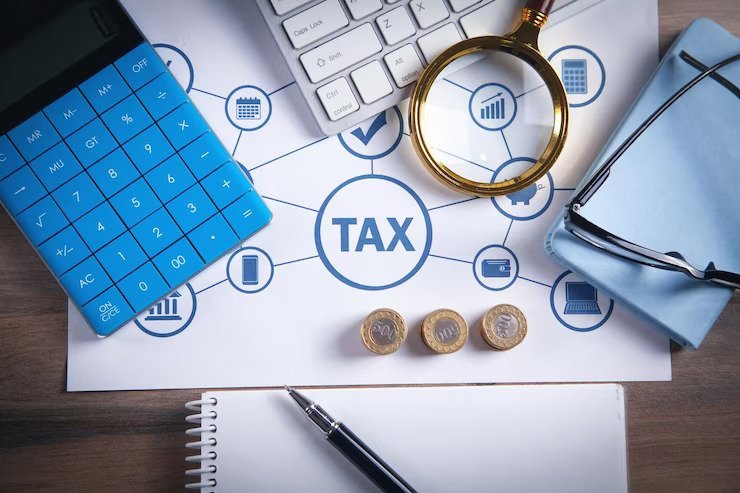Freelancers encounter distinct obstacles in the realm of tax planning and the optimization of their long-term financial objectives due to their autonomous nature and adaptable work schedules. Freelancers, in contrast to traditional employees, bear the tax burden and must navigate the intricate realm of self-employment tax, quarterly tax payments, and deductions. The challenges that contractors face when attempting to optimize tax savings and ensure accurate tax filing are examined in this article. Additionally, approaches to integrating long-term financial objectives into planning for 1099 employee taxes are provided.
Optimizing freelancers’ tax advantages
Determining their tax liability and devising strategies to optimize tax savings constitutes a fundamental obstacle encountered by freelancers. In order to accurately ascertain their tax obligation, freelancers may employ a range of tools at their disposal, including a freelance tax calculator that incorporates their income, expenses, and deductions. Freelancers can estimate their tax liability and make appropriate financial preparations by utilizing such calculators.
Freelancers must give considerable thought to self-employment taxes. In contrast to conventional employees, freelancers are obligated to remit both the employer and employee contributions towards Social Security and Medicare taxes. Beginning in 2021, the self-employment tax rate on the initial $142,800 of net income is 15.3%, with an additional 2.9% applied to income exceeding that threshold.
Payments of taxes quarterly
The obligation to remit quarterly tax payments presents an additional obstacle for independent contractors. In order to avoid IRS penalties and interest, freelancers must project their annual income and make four equal payments over the course of the year. This may pose an especially formidable obstacle for independent contractors whose revenue is inconsistent or who encounter sudden changes in their earnings.
Freelancers may commence the process of ascertaining the suitable sum for quarterly tax payments by consulting their tax return from the preceding year. Freelancers can determine their anticipated tax liability and partition it into four equal installments by performing an estimation of their income and expenses for the present year. Regularly reviewing and adjusting these estimates is crucial in order to guarantee precise payments.
Distractions from taxes for freelancers
A benefit that entrepreneurs possess is the capacity to deduct a multitude of expenses related to their business, thereby diminishing their taxable income. Typical deductions for independent contractors consist of health insurance premiums, office supplies, professional development courses, and home office expenses. Nevertheless, in order to prevent complications during the tax filing process, it is vital to comprehend the precise regulations and restrictions that pertain to these deductions.
Freelancers are required to maintain comprehensive records of all business-related expenses. Freelancers can guarantee adherence to tax regulations and provide supporting documentation for their deductions through the maintenance of precise records. A tax expert who specializes in self-employment taxes should also be consulted by freelancers in order to ensure that they are maximizing their deductions and capitalizing on all applicable tax benefits.
Tax planning techniques applicable to entrepreneurs
Freelancers should contemplate the subsequent strategies in order to integrate long-term financial objectives into their tax planning:
1. The establishment of retirement savings as a top priority for freelancers necessitates the contribution to self-employed 401(k) plans or individual retirement accounts (IRAs). In addition to mitigating taxable income, these contributions aid freelancers in accumulating a future retirement fund.
2. Projected Tax Payments: Freelancers can maximize their cash flow and prevent penalties and interest by ensuring punctual and precise quarterly tax payments.
3. Establishing a Budget and Monitoring Expenses: Freelancers can identify opportunities to reduce costs and increase savings by developing a budget and keeping track of their expenditures. Additionally, by doing so, freelancers are able to plan accordingly and have a comprehensive understanding of their financial situation.
4. Tax Professional Assistance: Freelancers can benefit from the guidance of a tax expert who specializes in self-employment taxation by utilizing their services. This will guarantee adherence to tax regulations. These experts can assist independent contractors in recognizing supplementary tax deductions, getting around intricate tax regulations, and maximizing their tax savings.
In conclusion
In regard to optimizing their long-term financial objectives and tax planning, freelancers encounter distinct obstacles. Freelancers can maximize their tax savings through the application of tools such as tax calculators designed for freelancers, comprehension of self-employment tax obligations, accurate quarterly tax payments, and the utilization of tax deductions. Tax planning that incorporates long-term financial objectives entails the implementation of budgeting, retirement savings, and professional assistance. By implementing these strategies, independent contractors can effectively maneuver through the intricate tax environment, reduce their tax obligations, and make strides toward attaining their long-term financial goals.




